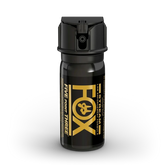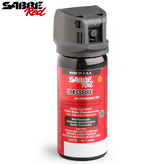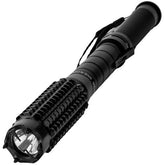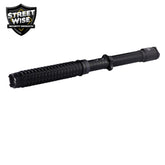Prepare For An Emergency
Emergencies and natural disasters can and often occur with no advance notice. It is important that you set aside time NOW to plan how you and your family would react during and after an emergency. Right now we have the "Swine Flu" scare, hurricane season is right around the corner, tornado's threaten and earthquakes threaten many of our states, and terrorism is one everyone's mind.
Awareness and preparation are the key! Take some simple steps to prepare for and respond to potential emergencies by doing three key things:
- Get an emergency supply kit
- Make a family emergency plan
- Be informed and educated about the different types of emergencies that could occur and their appropriate responses. Today I would like to cover the emergency supply kit and what types of item(s) you need to ensure it is complete and useful if needed. Your basic supply kit should include: ❑ Water, one gallon of water per person per day for at least three days, for drinking and sanitation ❑ Food, at least a three-day supply of non-perishable food ❑ Battery-powered or hand crank radio and a NOAA Weather Radio with tone alert and extra batteries for both ❑ Flashlight and extra batteries ❑ First aid kit ❑ Whistle to signal for help ❑ Dust mask, to help filter contaminated air and plastic sheeting and duct tape to shelter-in-place ❑ Moist towelettes, garbage bags and plastic ties for personal sanitation ❑ Wrench or pliers to turn off utilities ❑ Can opener for food (if kit contains canned food) ❑ Local maps ❑ Prescription medications and glasses ❑ Infant formula and diapers ❑ Pet food and extra water for your pet ❑ Important family documents such as copies of insurance policies, identification and bank account records in a waterproof, portable container ❑ Cash or traveler’s checks and change ❑ Emergency reference material such as a first aid book or information from www.ready.gov ❑ Sleeping bag or warm blanket for each person. Consider additional bedding if you live in a cold-weather climate. ❑ Complete change of clothing including a long sleeved shirt, long pants and sturdy shoes. Consider additional clothing if you live in a cold-weather climate ❑ Household chlorine bleach and medicine dropper – When diluted nine parts water to one part bleach, bleach can be used as a disinfectant. Or in an emergency, you can use it to treat water by using 16 drops of regular household liquid bleach per gallon of water. Do not use scented, color safe or bleaches with added cleaners ❑ Fire Extinguisher ❑ Matches in a waterproof container ❑ Feminine supplies and personal hygiene items ❑ Mess kits, paper cups, plates and plastic utensils, paper towels ❑ Paper and pencils ❑ Books, games, puzzles or other activities for children Start today building at least one kit per household. In the next few days we will post information regarding constructing a family emergency plan. Resources provided by Ready.gov Be safe, Bryan
Shop Stun Batons
Stun Master 110,000,000 Volt Bad Ass Metal Stun Baton And Flashlight
17 reviews
Looks like a police "billy club" and delivers an amazing 110 million volts of electricity 4.9 milliamps depending on the charge of the batteries Made from some of the strongest material on the planet - high-quality aircraft aluminum High-end tactical 120 Lumen LED flashlight Firm rubberized contoured grip...
- $64.95
$79.95- $64.95
- Unit price
- / per
Streetwise Mini Barbarian Stun Baton Flashlight 9,000,000
2 reviews
The MINI Barbarian is the perfect name for our newest stun baton. If Conan the Barbarian lived in modern times, we are sure this would be his weapon of choice. Even in our more refined culture, there are still “barbarians” who roam the streets....
- $49.95
$54.95- $49.95
- Unit price
- / per
Streetwise Barbarian 9,000,000* Stun Baton Flashlight
5 reviews
Protecting yourself with the Barbarian is as easy as 1,2,3: Identify Threat: An attacker will use the cover of darkness to sneak up on their victims and to hide their identity. He'll also look for the most vulnerable victim. This powerful light beam shined...
- $55.95
- $55.95
- Unit price
- / per
Streetwise Attitude Adjuster Stun Baton Flashlight
3 reviews
Adjusts from 16.5" to 19": With a quick twist of the handle, you can adjust this unit to any desired length between 16.5" and 19". Triple Stun Technology: Most stun guns on the market today have only one or two points of contact. When...
- $59.95
- $59.95
- Unit price
- / per
Tags:















